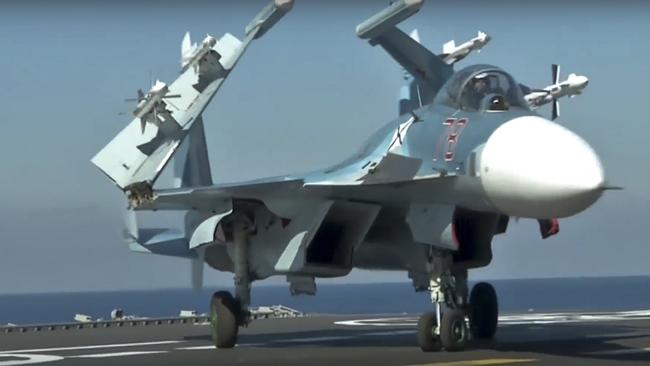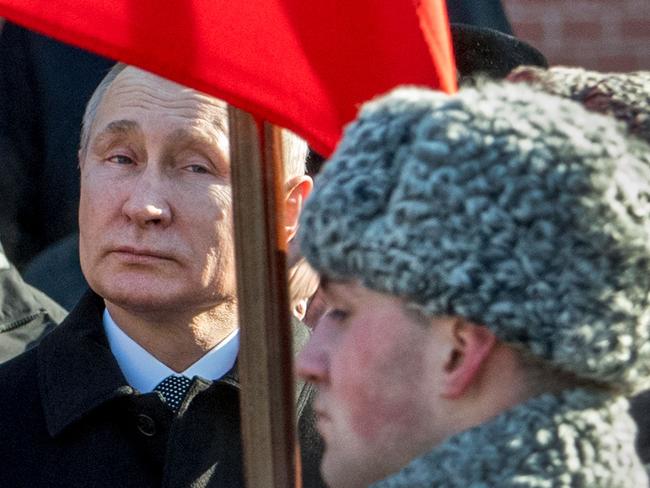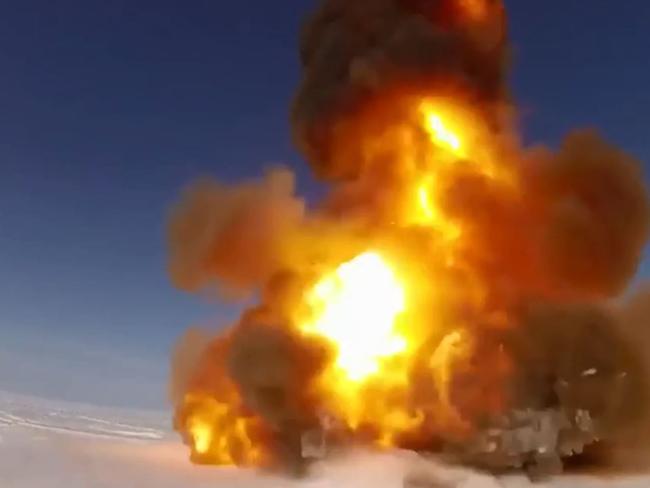Russia’s new laser can reportedly shoot down satellites
MOSCOW claims its engineers have advanced work on the next big anti-satellite weapon, which will have a strategic capability.

IT MAY sound like something out of a hi-tech future war movie, but plane-mounted lasers capable of hitting enemy satellites are real.
Russia’s military has reportedly moved a step closer to this reality with the country’s engineers creating such a laser.
A source told Russian media agency Interfax that weapons maker Almaz-Antey had “completed work on the anti-satellite complex” which includes a laser and ground control equipment.
“The development of this complex took place, all the work done will allow to make a step forward in the creation of such aircraft,” the source said.
According to Interfax, defence companies have been working on the plane-mounted laser, which if confirmed to be true, will be capable of hitting enemy satellites.
Russia will “actively use the developments gained in the creation of the aircraft with laser weapons A-60” it said.

Western experts have not yet verified the claim, however they agree it’s entirely possible such a program exists.
John Blaxland, Professor of International Security and Intelligence Studies and director of ANU’s Southeast Asia Institute said this move was a strategic one on Moscow’s part.
“This development speaks to Russia’s focus on advanced military technology as a means to reduce the considerable advantage American military forces have in terms of conventional (non nuclear) weapons systems that are enabled by the world’s most sophisticated global satellite network,” he said.
Dr Malcolm Davis, senior analyst in defence strategy and capability at the Australian Strategic Policy Institute, said it was certainly technically possible the Russians were developing such a system.
“The US had the YAL-1 Airborne Laser on a modified Boeing 747 some years back to try and shoot down ballistic missiles, but it was scrapped for cost reasons even though the technology worked,” he said.

“It’s conceivable that the Russians are emulating that program, but rather than try to shoot down ballistic missiles, they are targeting satellites.”
READ MORE: Russia’s Su-57 stealth fighter is about to meet the US F-22 over Syria
Dr Davis said this would still be a complex undertaking.
He said this required a mix of ground and air systems to function effectively to target a satellite, track it, and then hand that information over to the ‘shooter’ aircraft which would then target and fire the laser once the satellite came within range.
“The effect would be nearly instantaneous even at long range,” Dr Davis said.
“Firing from high in the atmosphere eases a lot of problems associated with laser weapons because there is not much air to undermine targeting and beam quality, and expands the time available to target and attack a satellite.”
Dr Davis also pointed out that developing anti-satellite (ASAT) weapons was a key focus for both China and Russia because “they recognise our dependency on space capabilities to undertake military operations”.
“The US is scrambling to respond to this challenge, but it’s difficult to defend satellites in orbit,” he said.

Earlier this month, Russia unveiled its new antimissile system which is designed to safeguard key Moscow installations.
The Ministry of Defence of the Russian Federation released a video of the successful test of a new rocket designed to destroy any missiles aimed at key Moscow installations.
The military said the upgraded air defence missiles were capable of intercepting single and multiple strikes, including new generation intercontinental ballistic missiles.
The system is being hailed as a game-changer for Russian defence with officials calling the rocket’s success a leap forward in capability.



